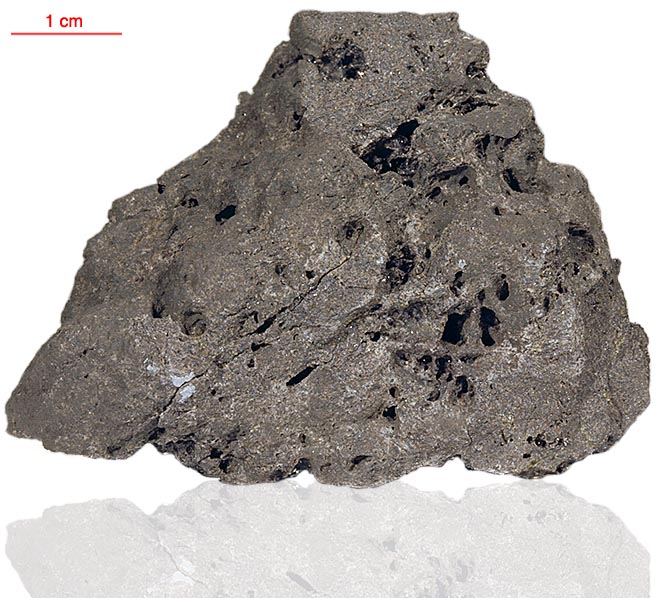
Fact sheet
The astronauts spotted what appeared to be a contact between two areas of different vesicularity. They hammered off two pieces (71135 and 71136) from one side of the contact and one piece from the other side (71155). 71135 and 71136 are vesicular ilmenite basalts with both freshly broken and exposed surfaces. They are characterized by large sawtooth needles of ilmenite set in a fine-grained intergrown plagioclase-pyroxene matrix. In places the pyroxene is also dendrite-like (rotation 1).
The sample weighed 36.85 grams before analysis and has not been dated.
Further details of this and other Apollo samples are here: http://curator.jsc.nasa.gov/lunar/
Apollo 17, the final manned landing mission, had two objectives: to obtain samples of ancient rocks from the lunar highlands and to look for evidence of younger volcanic activity on the valley floor.
This small Collection contains material deriving from both periods, including igneous rocks around 4.3 billion years old from the lunar highlands as well as younger volcanic samples dating from about 3.6 billion years ago.
Apollo 17 was launched on 7 December 1972.






